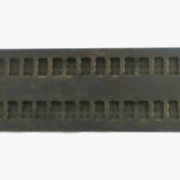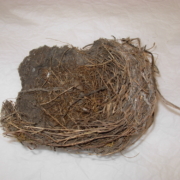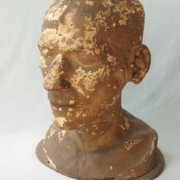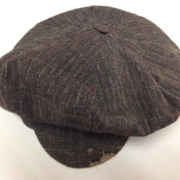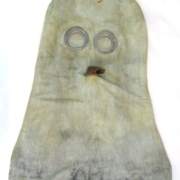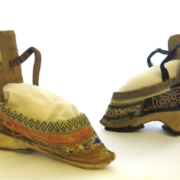Object of the Month – June 2019
Did You Know?
The ‘cabbage white’ butterfly is actually two closely related species – the large white (Pieris brassicae) and the small white (Pieris rapae). Apart from the size difference, the large white has darker black wing spots, and a dark black band at the front of its wings. Both lay their eggs on cabbages in gardens, allotments and farms, as it is the preferred food of their caterpillars. The large white takes the outer leaves, while the small white prefers the soft inner leaves. The adult (imago) of both species often feeds on nectar from buddleia flowers.
Cabbage white butterflies “Insects Injurious to Vegetables”. SAFWM : 118007. © Saffron Walden Museum
The display has a male and female of each species, with the male at the top and female below. There is also a caterpillar of the large white butterfly, which is yellow and hairy, with black bumps on its skin. The small white’s caterpillar is pale green and hairless with a narrow yellow stripe on either side. The cabbage leaf in the box has some caterpillar feeding damage.
Caterpillar of the small white. CC BY-SA 3.0, Harald Süpfle.
Chrysalis of the small white. CC BY-SA 2.5, James Lindsey at Ecology of Commanster.
Life cycle
These butterflies have two ‘broods’ per year, and three in a good year. In the spring, butterflies which survived the winter as a chrysalis emerge as adults in April and May. They lay eggs in May and June (spring brood), which hatch into caterpillars in June and July. The caterpillars feed and grow quickly, and shed their skin 4 times as they grow. After about a month, the caterpillar finds a sheltered spot to transform into a butterfly in a process called metamorphosis. The caterpillar spins a pad of silk against the surface of its shelter, and sheds it skin again to reveal a hard skin (chrysalis), which has a small hook to keep it attached to the silk.
Adults emerge from the chrysalis about two weeks later, in July and August. They then lay eggs which develop into caterpillars through September and form chrysalises into October. The caterpillars go through a very slow metamorphosis to survive the winter, and emerge as adults the following April and May to start the process again.
Butterfly survival
On the right of the leaf are some cocoons and adults of a parasitic wasp which lays its eggs inside the caterpillars. After hatching, the wasp larvae feed on the caterpillar and eventually kill it, helping to control cabbage white numbers in a natural way. The adult wasp feeds on nectar.
Like many insects, these butterflies have declined in number recently. Currently, the large white and small white are not the focus of conservation efforts, but many other more specialist butterflies have declined severely or have gone extinct in Essex since 1900.
You can find out more about local butterflies in the Take Away the Walls exhibition at the Museum.
June’s Object of the Month was chosen by James Lumbard, Natural Sciences Officer.
Image credits
Pieris rapae caterpillar: James Lindsey at Ecology of Commanster [CC BY-SA 2.5 (https://creativecommons.org/licenses/by-sa/2.5)]. Accessed 11/06/2019.
Pieris rapae chrysalis: Harald Süpfle [CC BY-SA 3.0 (https://creativecommons.org/licenses/by-sa/3.0)]. Accessed 11/06/2019
Parasitic wasp Cotesia glomerata: Copyright © Albert de Wilde – All rights reserved http://www.ahw.me/img/sluipwesp4mm_grootkoolwitje01b.html. Accessed 11/06/2019.
Featured Image – Cabbage whites “Insects Injurious to Vegetables” on display in the Museum © Saffron Walden Museum






